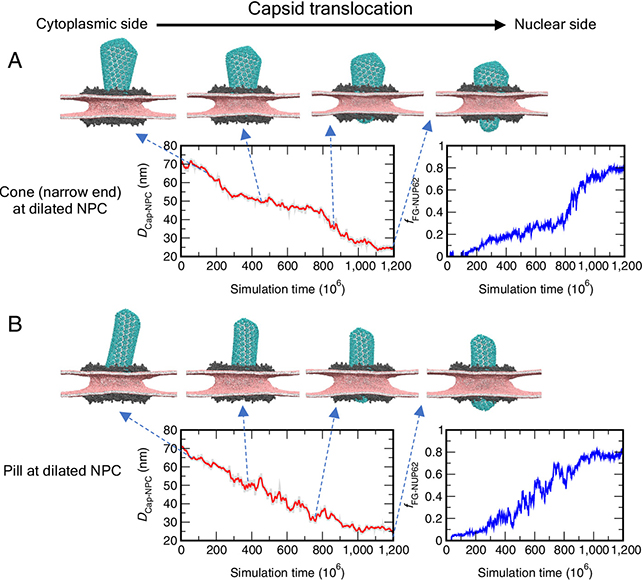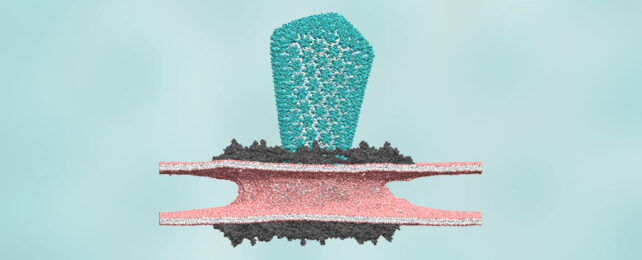Scientists have made an important discovery in understanding how the Human Immunodeficiency Virus – better known as HIV – breaks into the nucleus of a cell, enabling it to replicate and spread.
This process has been something of a mystery until now, and the research team from the University of Chicago says that their findings will help in understanding HIV and its impact on the body. Ultimately, it could lead to better treatments.
To find out exactly how HIV invades a cell nucleus, simulations featuring thousands of proteins were run, looking at the HIV capsid (the capsule containing the virus material) and the cell's nuclear pore complex; the mailbox-slot through which genetic information is sent and delivered.

"The pore complex is an incredible piece of machinery," says theoretical chemist Gregory Voth from the University of Chicago. "It can't let just anything into the nucleus of your cell, or you'd be in real trouble, but it's got to let quite a bit of stuff in. Somehow, the HIV capsid has figured out how to sneak in."
"The problem is, we can't watch it live: you have to go to heroic experimental efforts to even get a single, moment-in-time snapshot."
The simulations revealed that the HIV capsid wedges itself in, smallest end first, before applying what's known as an electrostatic ratchet. The researchers compare it to a seatbelt in a car, getting tighter and tighter.
Another key finding was that the flexibility and deformation of both the capsid and the pore are crucial in allowing the capsid through. The capsid develops regions of less ordered molecules in order to accommodate the extra pressure, and the researchers think this might explain their cone-like shape.
Previously, researchers weren't certain whether the capsid stayed fully intact as it squeezed through the pore complex. Having a better insight into what's happening here will help in the study of cell interactions more generally.
"I think this modeling also gives us a new way to understand how many things get into the nucleus, not just HIV," says Voth.
This is just one of several steps in the infection process, though is essential to the way HIV infection sustains itself in its host's body. Being able to stop that would be a significant step forward in finding a full cure for the virus.
Any treatment that somehow interrupts this sneaky ratcheting method would harm HIV's chances of survival, and the researchers suggest there are potentially a number of ways to go about it.
"For example, you could try to make the HIV capsid less elastic, which our data suggests would hamper its ability to get inside the nucleus," says chemist Arpa Hudait, from the University of Chicago.
The research has been published in PNAS.
